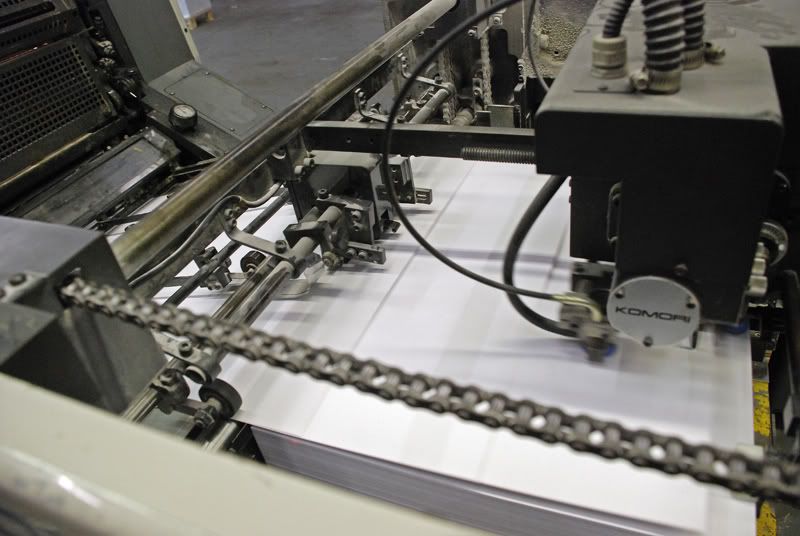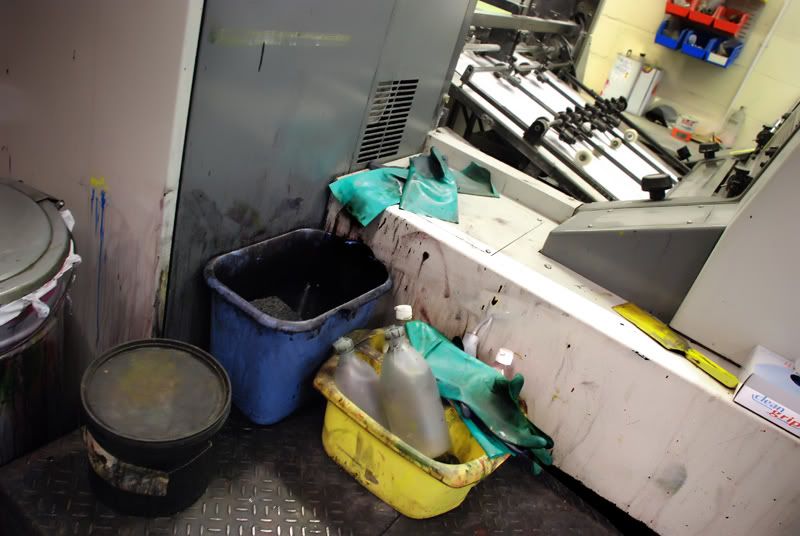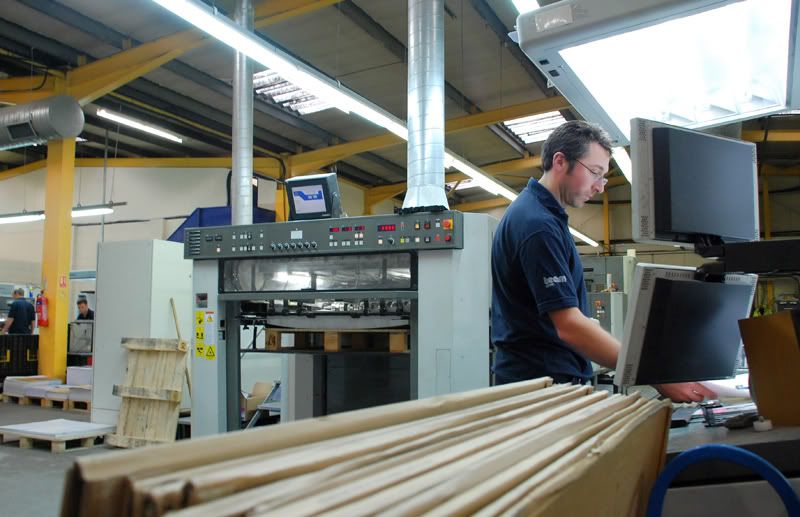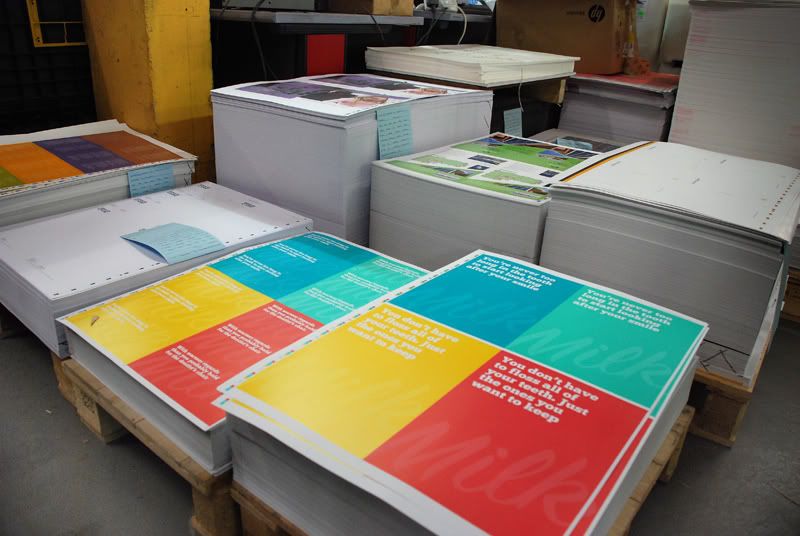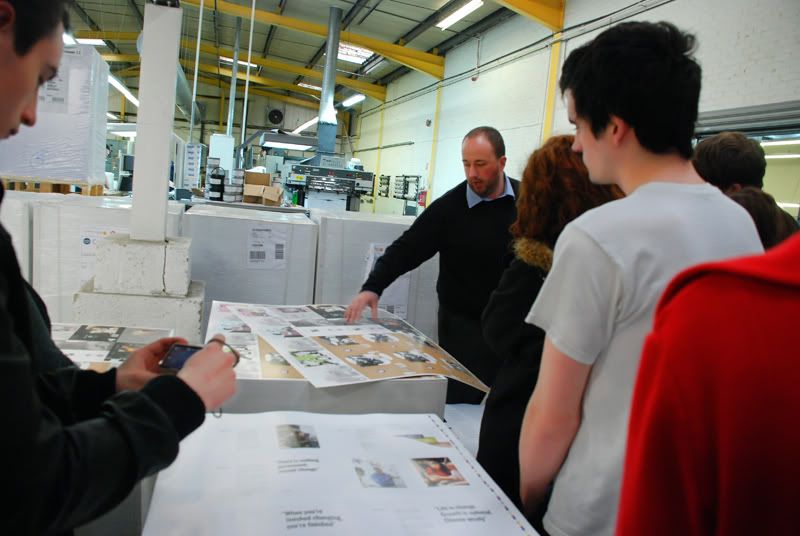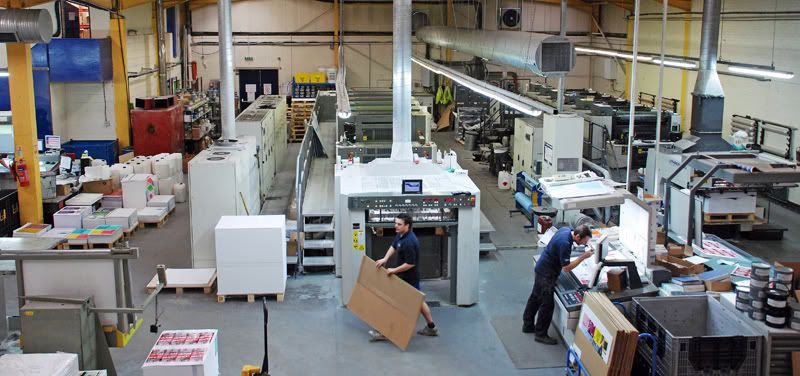Tuesday, 23 November 2010
OUGD 201 EVALUATION
QuikSilver foundation is a charitable organisation running fundraisers for health and youth charities. The problem I addressed with the foundation was that QS’s current form of fundraising is not something well known. The events that have been run in the past tend to be small functions and individual challenges such as ‘Paddle to Live’.
Incorporating Quiksilver’s Sponsored surf team I’ve proposed a charitable fund raising event. The event is a pay on entry day where you’d be able to view QS’s surfers whilst also being able to purchase low value products as means of donation throughout the day. The events title, Goat Boater is a derogatory term used in the early 80’s onwards, meaning ‘New Surf’.
An identity was formed around the image of goats and the colour palette was taken from colours of coral and the ocean. To promote the event posters were made using the same coral colours seen in the ‘Goat Boater’ identity. It’s intended purpose would to be shown around the city acting as a method of awareness to the day. This is a large format product intended to show impact through bold shape and colouring. I’d say the poster is sufficient in it’s effectiveness however for me there was always something missing. I initially struggled to find a strong colour to use for the bottom of the page as most clashed against others or drew attention away from the central image.
Alongside the poster we have the smaller A6 Leaflet intended to be distributed around location. This could be included and or printed in relevant magazines to gain maximum awareness to the event and cause. The flyer uses a slightly different colour palette to the poster. With the flyer I went for a much milder colour in comparison to the blue as seen on the poster. I think this probably is a better colour choice but when tested on the landscape poster it didn’t work at all as there was simply too much of a dull colour.
The banner is completely different to the other design work and intends to create a more striking point, something that could not be as so easily achieved with the GB’ colour palette.. The banner’s intended use was for location dressing and to display the relevant sponsors so it needed to stand out so it very clearly underlined the event, GOAT BOATER, and all the relevant sponsors that were to be involved in that event.
As far as products were concerned, I believe I did a fairly decent job. My main goal for this project was to make design that little bit more interesting. The problem I originally identified with existing charitable products was that they didn’t really serve purpose or had no real functionality. I wanted the viewer to look at the design and take it from something flat to 3D in there own interpretation. This way I believed it would make it more personal and hopefully make it something they’d want to keep.
A range of products that supported this idea were soon produced such as Quik Cards, and Quik Fold, named using the first part of the branding name, QuikSilver. All the products are aimed at youth market and upwards, so the idea of them being able to be creative with the work was something I felt was really important, and that physical interaction might hopefully make it seem more valuable and not throwaway.
‘Quik Cards’ are packaged as a set of 50 cards. The cards are pre-cut so that they can be taken from 2D to 3D in an infinite amount of ways. The designs are based around sections of the previous poster art and other new pieces designed around the idea of surf culture, through shape and colour.
‘Quik Fold’ The idea behind this was the want to take an image off the page and make something interactive that the user could engage with. The Quik Fold works from a net which would be printed to the reverse of all the posters in the GB’ range. The posters would perforated so that can be easily popped out from the sheet and ‘Quikly’ made.
Branching off from this I also made a unisex T Shirt supported by a further 3 Quik designs. The Goat Boater colour palette was slightly altered to adhere to the unisex needs of the products; however it still retains the branding and identity of the event.
The shirt was something that I wanted to create from the start. Quiksilver’s branding awareness is largely achieved through its range of apparel, so clothing was something I wanted to get right. The issue with clothing in relevance to the idea behind the event was costing. I could have easily gone off and produced a range of 10 shirts to be sold at the event but why would I, would they sell? What needed to be addressed was the context. This is a charitable event so the product range shouldn’t necessarily go to the extent of an entire range as this is unrealistic. To narrow this down, the unisex shirt made perfect sense as it could be something that can be batch produced in a range of sizes and we don’t need to make 50 of each etc. The shirt features the main branding being the Goat Boater logo in simple soft colours.
Tuesday, 9 November 2010
Friday, 15 October 2010
Enterprise - Clients Habbits
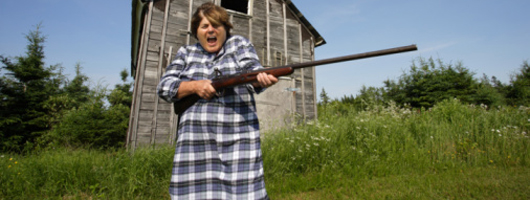 |
| At times, dealing with clients could be a nightmare but tackling difficult clients is all part and parcel of the game…isn’t it? Now, don’t get me wrong here… I don’t wish to imply that all clients are pesky and irritating. On the contrary, I’ve had the opportunity to work with some very nice and cooperative clients, but I’ve also had my fair share of worst clients as well. Recall my recent post on personality types of graphic designers. Similar to that, I feel that clients can also be categorized according to similar traits and behaviors. Each can be classified into a certain personality type. A graphic designer must be capable of dealing with all types of clients. Hence, it is better to identify what type of client you are dealing with, so that you are ready to deal with any client objections and rejections. |
1. The Wise “Mr. X”: |
 |
| These types of clients are commonplace, especially if you are a graphic designer. There is literally no shortage of Smart Alec’s and Know-it-all’s in this world. Wise owls are the type of clients who think they are more adept than the designer and want to impose their ‘wisdom’ over the designer. This can be really provoking for a graphic designer to listen to client statements like “Hey! I know more than you do!” But then you have to remember…patience is virtue! |
2. The Runaway Bride |
 |
| These are the shrewdest and most deceiving of all clients. Like a runaway bride, these types of clients runaway from the middle of a contract or agreement, leaving graphic designers high and dry. They learn a few concepts from you and then rob you of your design ideas without any remuneration whatsoever. Other runaway clients are those who shy away from their contract agreements in the middle of the project saying, “Hey I’ve changed my mind…I don’t need a design anymore.” |
3. The Granny: |
 |
| While majority of clients prefer modern and contemporary designs, there a few clients whom I’d like to term as “grannies”…stuck in the past. They are typical traditionalists who favor conventional and old design concepts and don’t like any changes to their ancient thinking. No matter how much you try to convince them, they will remain adamant to their fixed concepts. They remind me of “That 70’s Show”. |
4. The Cheapskate: |
 |
| As the name suggests, these are the clients who are miserly and scrooge when it comes to payments and remuneration. They fight over each and every dime without realizing that one should not forgo quality over money. On the contrary, they seek the best design in the least amount possible. They would look for discounts and concessions. Another trait of cheapskate client is that they would effortlessly declare, “That’s an easy job and shouldn’t cost much.” |
5. Miss-Confusion |
 |
| I remember working with a client who had this to say “I need a design that is AWESOME!” I asked him what he meant by awesome, to which he replied “I don’t know, but it should be something REALLY AWESOME!” These types of confused clients can be really serious trouble for graphic designers to handle. No prejudice but among male female clients, I find female ones to be more confused than their counterparts. At one point they’ll approve a design and the next minute they’ll change their mind. |
6. The Backseat Driver: |
 |
| If you happen to drive a car, you might be familiar with this term. Backseat driving is when the person sitting behind the driver in the car shouts “Watch it!” “Drive slowly!” or “Take a left, no take a right!” Think how annoying it is for the driver. Similarly, some clients are like backseat drivers, always fidgeting and meddling in your work. The one thing you would never want as a graphic designer is interference in you work and that is precisely what these type of clients do. Their will try to put in their two cents even if it doesn’t make any sense. |
7. The Impulsive Freak |
 |
| Some clients are impulsive by nature. They simply don’t have a grip over their emotions. Their emotions are unpredictable and unstable. At one point they would go as far as praising you with laurels, while on the other hand go seriously angry over the slightest of things. Hysteric as it may seem, this is a real test for graphic designers to control their own emotions while dealing with these types of clients. |
8. The Taunting Mother-in-Law |
 |
| Those who are married can quite well understand this personality type of clients. Although I’m single, I do have a fair but of idea of how taunting a mother-in-law can be. Likewise, some clients are so disapproving and complaining that they would nit-pick on the each and every step of the project. They are so cynical that they would mock your designs saying, “My nephew can design better than you”. |
9. The "Impatient" patient |
 |
| These types of clients are the restless souls who keep wandering over a graphic designer’s head to get their designs as soon as possible. They are so impatient that they expect you to finish their design project within the next minute. This can be a real menace and exasperating for designers who simply cannot perform their work in haste. These types of clients underlie the golden principle of “haste makes waste.” |
10. The Happy-go-lucky: |
 |
| Dealing with confused and angry clients is one thing, but to encounter a careless and happy-go-lucky can be even difficult for graphic designers. Since these are the kind of clients who meet you the first day, tell you what they want and then never bother to coordinate again. They are so carefree and nonchalant that they don’t even come for revisions or amendments. What happens is that in the end, If they don’t like the design, it the designer who they blame. |
Thursday, 27 May 2010
End Of Module Evaluation - OUGD103
2. What approaches to methods of research have you developed, and how have they informed you design development process?
3. What strengths can you identify in your work, and how have/will you capitalise on these?
4. What weakness can you identify in your work, and how ill you address these
5. Identify 5 things that you will do differently next time, and what do you expect to gain from doing these?
6. How would you grade yourself on the following areas:
5=Excellent , 4=Very good , 3=Good, 2=Average, 1=Poor
Attendance: 3
Punctuality: 4
Motivation: 4
Commitment: 5
Quality of work produced : 4
Quantity of work produced : 4
Wednesday, 26 May 2010
Communication is a virus Evaluation
We carried out our initial research in the form of a questionnaire which was passed around the course. From this we found that people do lie but not black lies. The majority of people gave feedback on the fact that they don’t lie regularly, always try to avoid it but if they do it’s only ever small white lies. The most common response was that people would tell a lie to avoid conversation. Examples like questions on partners appearance, “what does this dress look like” – ‘...nice?”. This took us in the direction of producing a form of guideline that could help bad liars survive the day to day situations.
The issue next was deciding what our target audience would respond to, and who exactly our target audience was. Secondary research revealed that lots of people will lie in a workplace to dodge awkward questions from there boss’s or colleagues. Even lying to people to get further in their own careers. In fact the majority of research we uncovered all pointed to work related situations, which is not to say it doesn’t happen anywhere else but it was recorded more in depth to this area.
To make sure we would be maximising our audience we later researched magazines and I started to get a list of age groups that tend to buy the magazines. I managed to find a website full of stats, listing sales per quarter and the target age group for each magazine. The most popular magazines were Heat for women and FHM for men. The design was a double page spread with tips and guides sourced from our own experiences and secondary research.
When it came to designing characters for the spread we wanted them to have a very loose, cartoony feel. We weren’t aiming for formal vectors and symbols, this had to be light. Initial trials in painting the characters weren’t so good. The issue was with the two colours plus stock and getting a colour for the skin and clothing that would also suit the design of the page layout. After a few test with colour we decided on red and black. Not the best colours in the world but it allowed us to get a light fleshy colour and darker tones for the layout.
Overall I think the design was ok. It’s not something that I’m entirely proud of but I think it did answer the brief. The main issue was the limited research into page layouts. When we were conducting the research and decided on which magazines we were using, we bought them and tried to replicate a style that could work within them. But a colour restriction in a full colour magazine was never going to blend and the layout we had wasn’t up to standard of a professional magazine layout.
Appolagise if this is a little hard to read. Will go back and edit if the times there
Speaking from Experience Self Evaluation
An issue with time management with new starters, and the adjustment to a full time degree course.
From speaking to students, taking questionnaires and from my own experiences, I quickly discovered the problem with the adjustment to the course. The main issue was that we don’t always stick to a plan and tend to leave random notes and scribbles, rather than structuring our time more effectively.
What evidence did you find to support your decisions?
My own weakness at time management was enough to know there was an issue, and from talking to other students I quickly found I wasn’t alone. It’s not that we’re all useless with time management; in most cases people are generally organized. The issues lies with prioritization and planning, we may not what we need to do but we will always ‘run out of time’ and wind up rushing the day before deadline.
What methods did you use to gather your evidence and what forms did it take?
I recorded my findings in a notebook, which was later typed and put in the sketchbook.
What methods of research did you find useful and why?
I found that my primary research and the research from my own experiences were most useful baring in mind the project title.
What research could you have carried out that would have proved more useful?
I could have done wider questionnaires outside of friends and students within the college. Could have been more beneficial to gain that wider spread but I also feel that the research I had was more than sufficient for the task.
Five things that you have learnt about the design process over the last five weeks?
1. One
2. Two
3. Three
4. Four
5. You guessed it
Five things you would do different next time
1. Being able to print text onto my badges..
2. Carry out more research
3. Probably test some more initial ideas. Felt I developed enough but didn’t get the widest range of initial work (as always).
4. Get the cover printed on better quality papers, had to use my own photo paper for cover, didn’t really match the rest of the booklet.
5. Make the lid a little more sturdier. The product was left in the sun one afternoon when the weather was amazing. The lid didn’t like this though, warped everywhere…
Monday, 15 March 2010
Communication is a Virus - 'How to tell a Lie' FEEDBACK
How professional was the presentation? Was it delivered with clarity?
“Delivered really clearly. Lots of research - Equally delivered”
How professional was the visual element of the presentation? How well were the boards designed? What might improve them?
“More colour – Information was relevant but narrow down info – larger font, easier to read”
Proposal
What is the message?
“Tell a lie convincingly. White lies – not negative lies”
Is there a clear sense of audience? Who is the project targeting?
“They wrote 18-45 but break down to those who read magazines regularly – 18-25
What context will the message exist in? How does the proposed solution answer the virus element of the brief?
“Magazine – would work in virus context. Can pass to friends and be in receptions etc.”
Overall, what do you think of the proposal?
“Nice ideas – work on audience – and also can focus more on content – research more info how to tell a lie.
SECOND FEEDBACK SHEET
Presentation
How professional was the verbal element of the presentation? Was it delivered with clarity?
1)Yes presentation was professional
2)
What might have improved it?
1)If you would of told a lie as part of the presentation.
2)
1)Yes it was nice and professional. Maybe too much information to read on the boards.
2)
Proposal
What is he message?
1)How to tell a lie convincingly. Soft white lie.
2)
Is there a clear sense of audience? Who is the project targeting?
1)Not too sure at the minute (narrowing down 18-30?) - contact magazine company
2)
1)Magazine article
2)
1)Proposal was good but maybe narrowing down the target audience. Also consider m.o.d little book/poster.
Monday, 1 March 2010
InDesign Brief
Double Page Spread based on partner, Brady
Considerations
Exploring Type Colour and Layout
Target Audience
Brady
Tone of Voice
Easy Going, Light hearted
Background
Exploring InDesign
Mandatory
Broad range of visual investigation
Sheets and notebooks
LANDSCAPE A3 237 x 380 20mm bleed
Saturday, 27 February 2010
Vogue Evaluation
With the design I tried to draw up a very glossy, well polished figure, symbolising the glamour and desirability that I would associate vogue to. With the quote in mind I then wanted to brake it up by contrasting it against a rough worm background.
Overall I am pleased with the design (shame it didn’t even get a single vote mind) however if I were to revisit the work I may tone out the background as its got a lot of contrast which seems to pull the viewers eyes more that the figure itself.
Sunday, 21 February 2010
End Of Module Evaluation- OUGD102
1. What skills have you developed through this module and how effectively do you think you have applied them?
I believe that I have learnt how to work with an idea and successfully push and develop it to a product, which got me thinking more and more about the possibilities. I’ve also further developed skills into researching and categorizing which acted as the main foundation for my collection 100 brief.
2. What approaches to/methods of research have you developed and how have they informed your design development process?
Collecting and categorising information and imagery was the only thing driving the last brief. I found that through a clear organised list I was able to structure and clearly identify my findings. The sorting of this information was essential to the final make.
3. What strengths can you identify in your work and how have/will you capitalise on these?
I think the main strength throughout this module was 100 brief. Although the image had to speed up towards the end I was really pleased with the paint effect at the start of the timeline. I found that given the time I was able to develop some more skills in Photoshop painting and try a few different techniques within the program.
I think the work done in Photoshop will aid later briefs, as I can take any initial ideas and begin to develop them further in PS.
4. What weaknesses can you identify in your work and how will you address these more fully?
Time has been a big issue with this module. Especially with the collection 100 project, as it took a very long time to find that initial idea. This is definitely something I’ll have to work on and look at ways to get that idea out there quicker.
5. Identify five things that you will do differently next time and what do you expect to gain from doing these?
Possibly look at testing more initial ideas/variations
Print out things as I go. Found that you can spend too much time on details and find that they cant even be seen when it comes to print!
Looking into creating a hard back cover. Time was an issue and there was a few issue to covering the timeline due to an oversight in its design.
Try different materials to see strengths and weaknesses appropriate to intended use.
Work more on blogs and sketchbook work. Stop seeing the end product as main target.
6.
Attendance 5
Punctuality 4
Motivation 4
Commitment 4
Quantity of work produced 4
Contribution to the group 3
Monday, 1 February 2010
Sunday, 17 January 2010
2. 5 door
3. Engine Sizes
4. Colour Ranges
5. Standard Wheel Sizes
6. Economy
7. Co2 Emissions
8. Price/affordability
9. No. Of models in range
10. Practicality
11. Dimensions
12. Target Markets
13. Age Groups
14. Timelines Mk1- current
15. Features
16. Safety Ratings
17. Make/Model
18. Year of manufacture
19. Gear Ratio
20. Hardtop/soft top
21. Petrol or diesel
22. Hybrids
23. Interior Features
24. Green Rating
25. Cost per mile
26. Service costs
27. Insurance groups
28. Retained value
29. Average MPG
30. Tank Range
31. Power BHP
32. Pulling power (torque)
33. 0-60
34. Max Speeds
35. Auto or Manual
36. Metallic paint / cost
37. Air Con or Climate Control
38. ESP
39. Number of airbags
40. Traction Y/N
41. Electric Windows
42. CD Single or Multi changer
43. MP3 connection
44. Bluetooth
45. Sat Navigation
46. Country there made in
47. Cup holders
48. Number of speakers
49. Mark of models
50. Standard Features
51. In car storage
52. Number of paint options
53. Rear Legroom
54. Innovative new features
55. Trim levels
56. Readability scores
57. Numbers sold
58. Mirrors Electric/Manual
59. Alloys or steelies
60. Auto switch headlights
61. Keyless entry
62. Folding mirrors
63. Alarms/Security
64. Fog lamps
65. Xenon’s
66. Option to turn airbags off
67. Steering wheel controls
68. C/coded bumpers
69. Window de-misters
70. Fuel consumption display
71. Heated seats
72. Rev counter
73. Range indicator
74. Paddle Shifters
75. Arm rests
76. Fixed/folding rear bench
77. Branded stereo
78. Side skirts
79. Roof rails
80. Cruise control
81. Rear windows – wind/electric
82. Engine cylinders
83. Brakes – drums/discs
84. Min turning circle
85. Weight
86. Kerb Weight
87. Fuel Tank Weight
88. Warranty options
89. Spare Wheels storage
90. Adjustable Steering Wheel
91. Height adjustable seats
92. Average Speed Displays
93. Average Fuel consumption display
94. Temp Gauge
95. Aux inputs
96. Expected depreciation
97. Sun roof
98. Wide angle Windscreens
99. In car storage
100. Hill start Clutch Option
